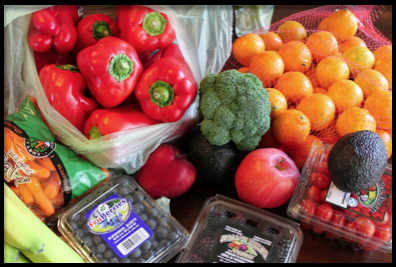by Tyler Farrish …
We’ve all seen news reports covering topics like: “Local Produce: How Safe Is It Really?” Prominent concerns about our fruits and vegetables include pesticide use, germs & bacteria, and food-borne illness. How can we best avoid these contaminants from making their way onto our dining room table?
If you have seen reports about contaminated produce, have your methods of preparation changed? Many of us habitually treat our produce as we always have, even thought we know the dangers. Here are Nimble’s top 3 keys to bringing cleaner produce from your market to your table:
Shop Organic & Buy Local when possible, especially for the 12 most porous fruits & vegetables:
Here’s the “Dirty Dozen”…Apples, Celery, Strawberries, Peaches, Spinach, Nectarines, Grapes (Imported), Sweet Bell Peppers, Potatoes, Blueberries, Lettuce, Kale & Collard Greens
 Clean Your Kitchen Workspace:
Clean Your Kitchen Workspace:
Keep your kitchen countertops, refrigerator, cookware, & cutlery clean. Avoid cross contamination of uncooked meats with fresh produce & don’t forget to wash your hands!
Wash Everything, even “pre-washed” produce:
• Leafy Produce: Soak in room temperature water, rinse, and blot or use a salad spinner to dry.
• Hard Produce: Clean with a firm-scrub brush under lukewarm running water (peeling will also decrease microbial load).
• Soft Produce: Soak in cool temperature water, rinse, & dry in colander or paper towels.
And one more tip! The three natural destroyers of vitamins in fruits and vegetables are heat, light, and oxygen.
• Limit storage time & keep produce in refrigerator when possible
• Cook minimally to maintain water-soluble vitamins (if cooked in water, try to reuse cooking water in soups & stews)
• Avoid washing/cutting/trimming of produce until right before use to limit exposure of nutrients to oxygen degradation.




